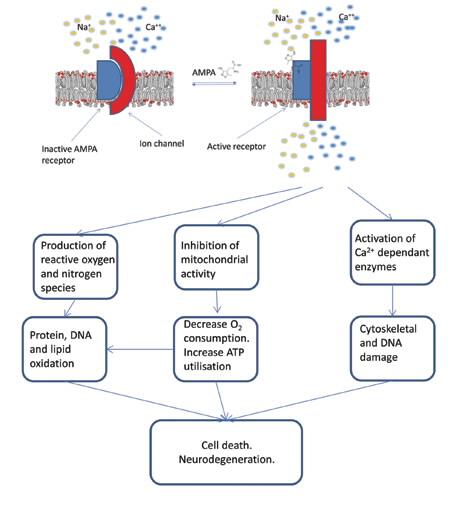

Published on the 14th March 2014 by ANSTO Staff
 As a result of many successful health strategies, technologies and initiatives, life expectancy in Australia is higher now than ever before. Although this is a good result, an increasingly ageing population comes with a number of challenges including a growing number of people with age related disabilities. Dementia is the most common cause of disability in Australians over the age of 65.
The term ‘dementia’ actually encompasses more than 100 degenerative disorders, including Alzheimer’s, Parkinson’s and Huntington’s diseases, that affect the central nervous system, and in particular the brain. In order to develop better treatments, we first need to better understand the basic underlying disease processes.
We know that calcium plays an important role in neurons, which are cells that are essential for a healthy functioning human nervous system. An alteration in calcium homeostasis is one of the events known to initiate irreversible deterioration of the nervous system, which ultimately leads to degeneration of brain tissue.
By measuring particle induced X-ray emissions in sections of inflamed rat brain tissue, ANSTO’s Nick Howell and his colleagues have been able to capture images of changes in calcium distribution. These images give potential insight into the early stages of dementia and help scientists better understand how these diseases start and progress. It is hoped that the results of this research will enable scientists to not only detect these diseases before symptoms are visible, but also contribute to the development of better treatments.
Neurodegenerative disorders
As in many other developed countries, increasing life expectancy through successful health strategies is giving Australia a significant and growing aging population. The impact of the aging population on the health system is significant, with dementia in particular being the greatest cause of disability in Australians over 65 years, and the fourth largest cause of disability overall The societal burden of dementia currently costs the health and aged care sector $4.9 billion per annum.
Neurodegenerative disease encompasses a spectrum of over 100 disorders, of which Alzheimer’s disease, Parkinson’s disease and Huntington’s disease are the most common. Younger and older populations are also impacted by neurological disorders such as stroke and epilepsy, with approximately 400,000 people impacted by each disease.
In order to develop treatments, we need to increase our understanding of underlying disease processes that are common to these conditions. Excitotoxicity is the pathological process by which nerve cells in the brain are damaged or killed by a disease process initiated by an excessive release of a compound in the brain that is used to communicate between specific neurons, called glutamate [1].
The resulting excessive stimulation of the receptor target for glutamate, allows the influx of calcium ions (Ca+2) through the outer membrane, which in turn stimulates a number of catabolic processes and results in an increase in the levels of free radicals and hence oxidative damage to proteins lipids and DNA. This results in an immune response within the affected area of brain, and eventually neurodegeneration [2].
|
